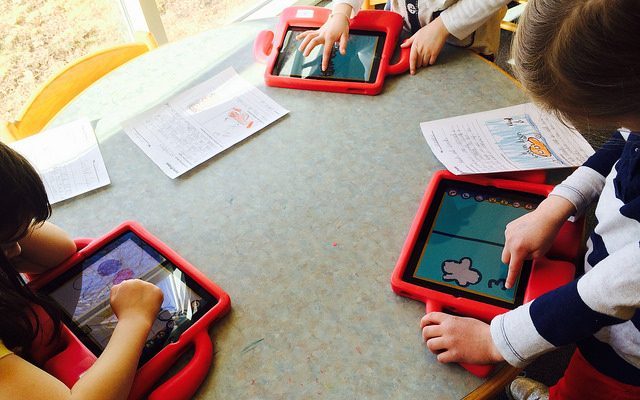Strategies for Seamlessly Integrating Technology into Class

Words like “technology,” “digital devices,” and “modern media” sound flashy and attractive. Of course teachers want to have those buzzwords in the classroom! But when it comes from moving to virtual reality to concrete curriculum, what does introducing technology in the classroom actually look like? What do all those buzzwords really mean?
Technology-focused education is based on a constructivist approach to learning. As described earlier, the teacher in a technologically advanced classroom is seen as a facilitator rather than a pure instructor. A teacher’s function is to help students use the technological resources appropriately to find the information rather than presenting it to them. Students need to learn how to find the information they need and take ownership of their own learning. Working in small groups is also a crucial factor in acquiring these skills. Small-group instruction versus massive class instruction provides opportunity to develop a group dynamic, to make group decisions, and to share knowledge. Classes working under these principles promote cooperative rather than competitive group dynamics.
The degree of ease with which you’ll incorporate technology into your teaching methods will depend on how much technology you’ve been exposed to during the course of your life. You may have grown up in a home where a computer was used every day, or attended a school where learning was predominantly based on technology. Teachers who are less familiar with technology and have used traditional methods of teaching can also incorporate technology into their classes without having to change their entire teaching system. Teachers in schools commonly communicate via e-mail and text messages, incorporate the Internet into lessons, and encourage the use of productivity tools such as Microsoft Excel and Word.
This method of teaching also changes the way educators assess knowledge. The fact that students play an active part in knowledge acquisition implies a better understanding of the content provided. Formative assessment in this model of teaching becomes more important than ever, and teacher feedback is a crucial part of the process in order for students to achieve the content learning goals of the lesson.
If you’re interested in learning more about the ways that you can capitalize on today’s modern inventions to bolster your teaching, take some time to look through our other articles on specific resources available out there in realm of hardware and software.





